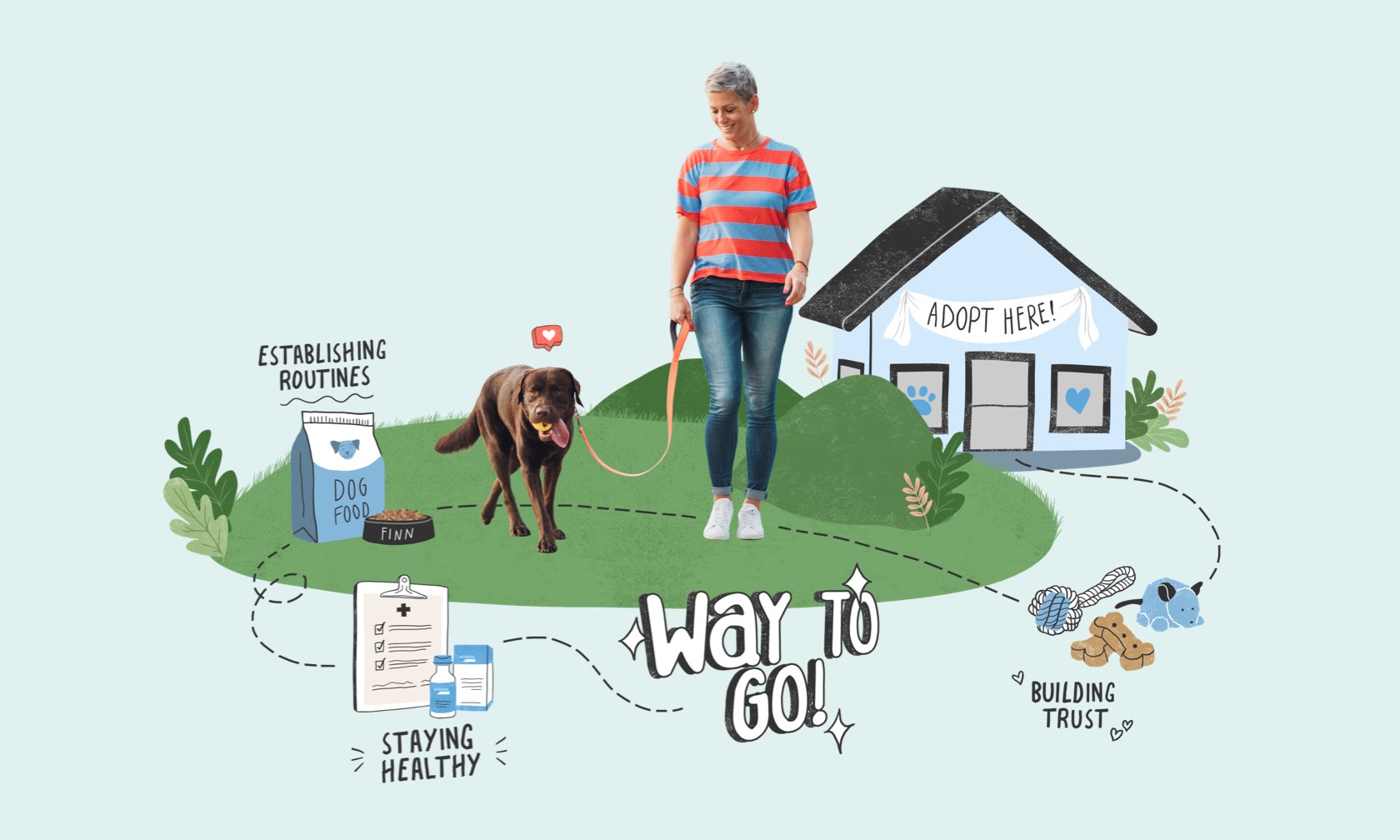Bringing your new cat home for the first time is exciting! But the uncertainty that comes with adopting a cat can also make you anxious. Will they like your home? Have you bought everything they’ll need?
Knowing what to expect when bringing a new cat home will go a long way in making the process easier, and help you know if something isn’t quite right and they need medical attention.

Adjusting to Their New Home
It is completely normal for your cat to take time to acclimate to their new environment — after all, they’re adjusting to a new environment and schedule with different expectations and household rules. Time, patience, consistency, and most importantly, love, go a long way in helping a new cat feel secure in their new home.
Periods of transition can last a few days, a few weeks, or a few months — each cat is different. Adult cats often need more time to adjust than kittens, since they’ve likely been rehomed, making changes more drastic for them. You might notice some signs of stress during the adjustment period:
- Hiding
- Destructive behaviors (like chewing or scratching inappropriate items)
- Going to the bathroom outside their litter box
- Refusing to eat
You can do a few things to help your new cat adjust to their new home:
- Give them space. Provide a safe and comfortable area for them to hide out in when they need space. Spritzing this space with calming pheromones or plugging in a feline calming pheromone diffuser (found online or in pet supply stores) nearby can encourage a sense of safety and security.
- Keep their environment consistent. Set up their food, water, and bedding where you plan on having it long term.
- Stay on a regular routine. Having a consistent feeding time and time for exercise or play helps your cat acclimate to their new home.
- Keep their environment calm. Don’t overwhelm them with lots of visitors or activity during the first week or two after coming home.
- Provide lots of mental enrichment activities. Having access to interactive toys and scratching post helps your cat release stress in a positive way (and saves your furniture!).
If you have other animals in the home, make sure that they’re introduced properly.
Bringing a New Kitten Home
Kitten-Proof Your Home
Kittens are curious and these little furballs will need interaction and consistency as they settle into their new place. Ensure that your home is kitten-proofed so they stay safe in their explorations. It’s important to block off access to possibly dangerous items, such as the trash can, computer or power cords, and toxic plants (like lilies). Closing doors or setting up gates can go a long way in keeping your kitten out of possibly dangerous situations.
Make Them Feel at Home
Have multiple litter boxes available for your new kitten, one per cat plus an additional one, as it promotes proper housetraining. Set out their food and water bowls in an easy-to-access area and provide lots of enrichment in their new environment. Set up scratching posts so they have an appropriate place to scratch and provide safe and stable places to perch and climb.
Feed Wet and Dry Food
It’s ideal to continue to feed your new kitten the food they were being fed at the rescue/shelter (or from the breeder), at least when they first come home. It’s also ideal to give your new kitten both dry and canned food when they’re young, this is because cats imprint on both the tastes and textures of food when they’re very young and it’s important to take this early step to better ensure that your cat will be receptive to both types/textures (wet & dry) of food as they grow and age.
Watch for Changes in Their Health
Keep an eye out for any coughing, sneezing, lethargy, or stomach upset in your new kitten. Young kittens are more susceptible to getting sick since their immune system is still developing and their smaller size makes them more susceptible to low blood sugar, dehydration, and other problems with missed meals and episodes of vomiting and/or diarrhea. Make sure they are dewormed to protect them from intestinal parasites, and that they receive recommended vaccines on time. Inform your veterinarian if you notice any symptoms.
Bringing a New Cat Home
Give Your Cat Space
Give your newly adopted adult cat time to settle in at their own pace. New adult cats might hide out for a few days as they acclimate. Make sure they have easily accessible food and water in the room that they decide is their new safe space. You can build trust and help them settle in by spending some time just sitting quietly near that area and letting them approach you on their own time. Even though it can be normal for a newly adopted cat to hide for a few days while they acclimate to their new home, it’s critically important to ensure that they’re still eating, drinking, and going to the bathroom.
Make Them Feel at Home
Set up your home with enough litter boxes so a new cat has options for where they can go — one litter box for each cat in your home, plus one. Provide lots of interactive toys for them to play with, and putting out lots of scratch posts will go a long way in saving your furniture from their claws. Cats enjoy having vertical places to climb and perch. Give them a cat tree or set up comfortable places for them to relax throughout your home.
Visit the Veterinarian
Ideally, visit your veterinarian within a week of bringing your cat home. Your veterinarian can help you determine when your cat will need booster vaccines and what flea, tick, heartworm, and intestinal parasite control will work best for your cat and their lifestyle.
Keep an Eye on Their Health
Watch your adult cat for any symptoms of common illnesses that spread easily in a shelter environment. For example, upper respiratory infections can be quite common in cats coming from a shelter or rescue environment. It’s important to keep their eyes and nostrils clean and clear of discharge and keep them warm and hydrated in the face of a URI. If their “cold” isn’t getting better after a day or two, or if it’s getting worse at any point, it’s time for a call and visit to your vet.
Knowing what to expect when bringing your new cat home will make the transition from rescue or shelter to your home easier and help you create a strong bond with them.
ZPC-00680R2



